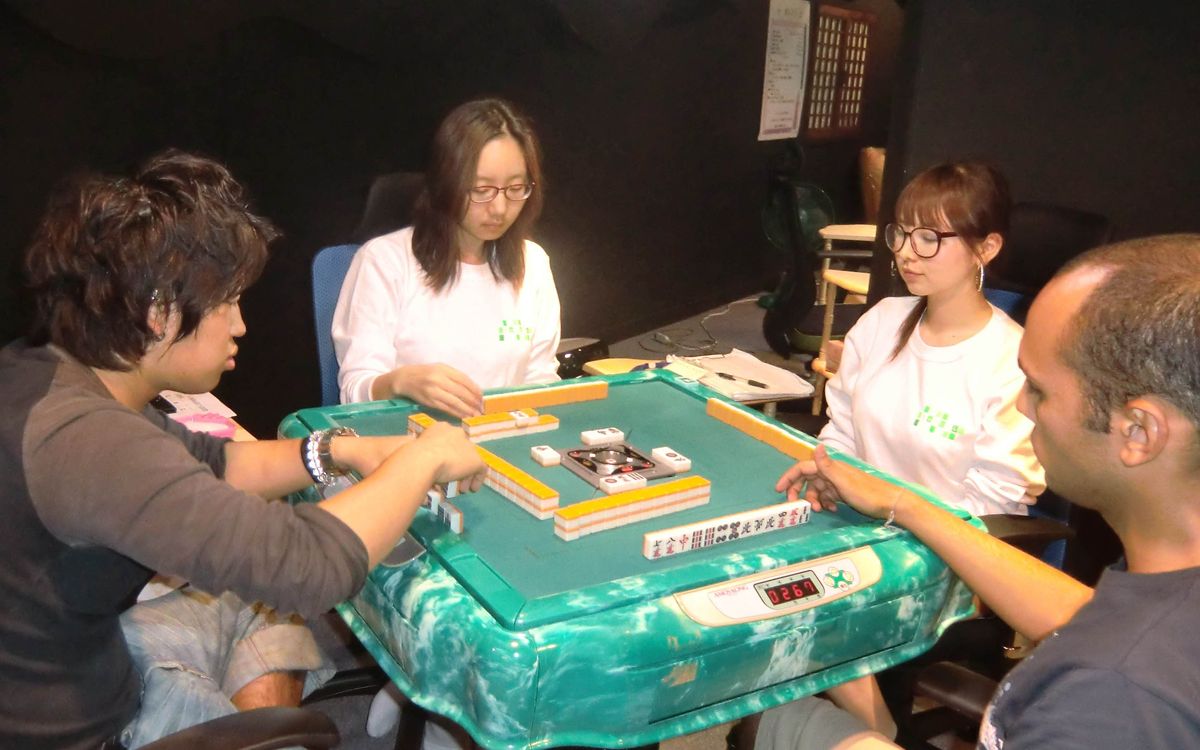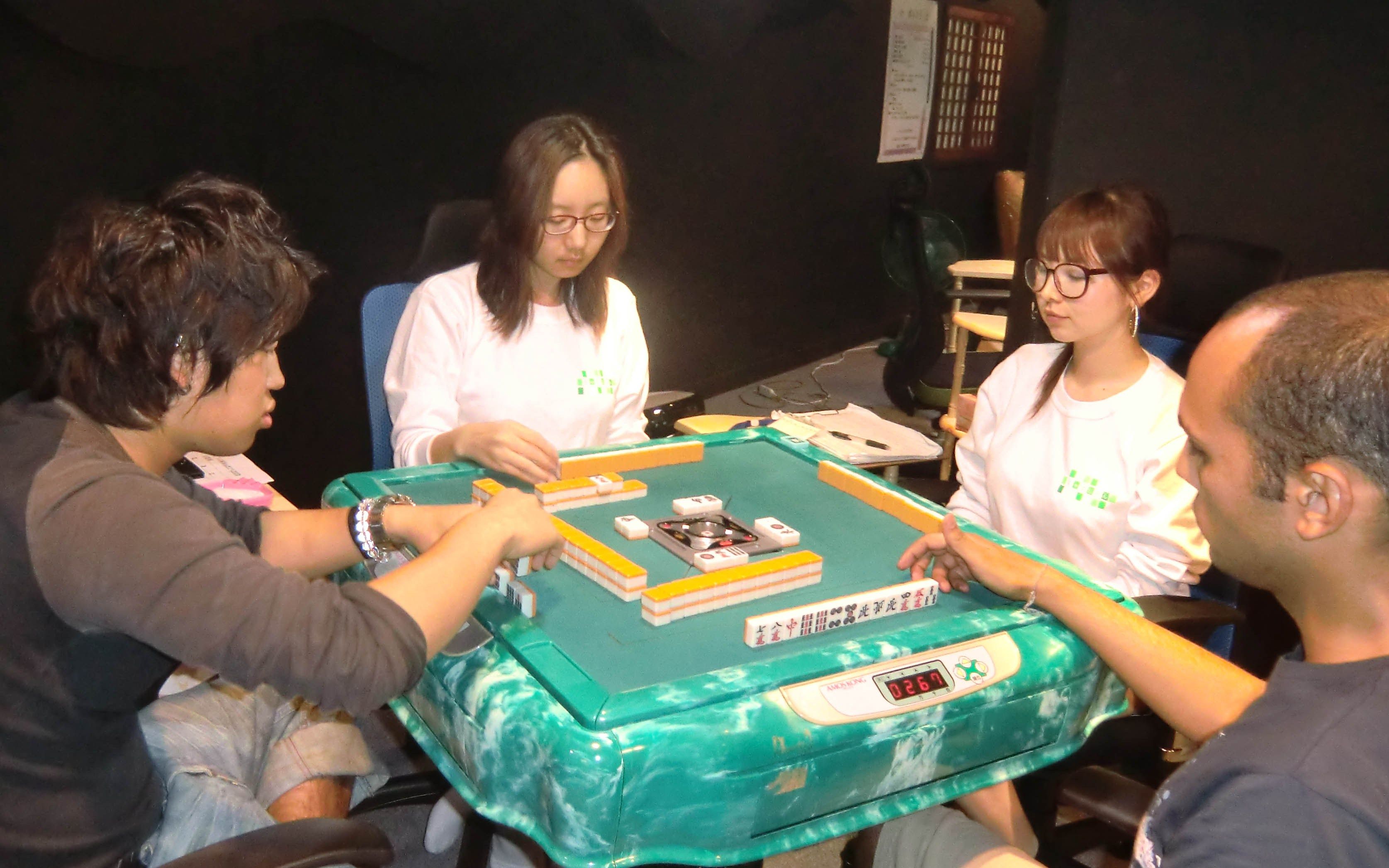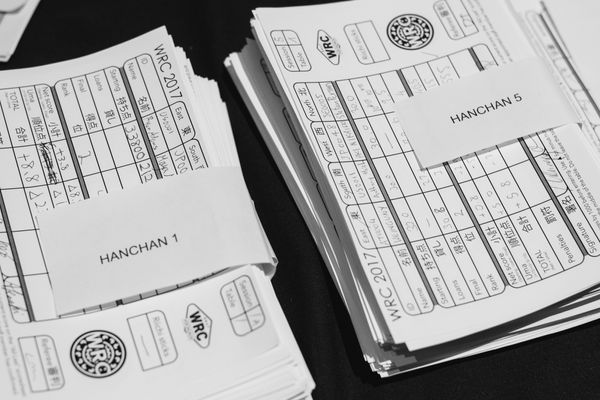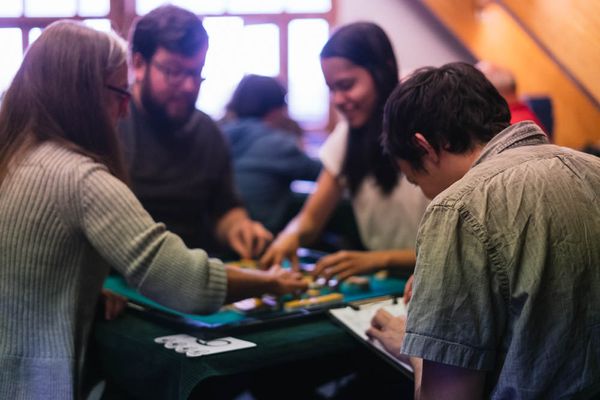Mahjong in Korea


Mahjong isn’t really a popular game in Korea. Actually it’s not popular at all. People recognize the game when they hear it, or when they see the tiles, but it is very hard to find a person who actually plays unless they are Chinese or Japanese. I went to Seoul for a month this past July, and during my stay I tried to find out more about the riichi scene in Korea.
I heard that there were three places where you can play in Seoul, but I could only visit one of these which was a parlor called Jabajan (じゃばじゃん). It is a parlor, but unlike Japan you cannot play for money. In Korea gambling is forbidden in places where Korean citizens are allowed, and most of the customers at Jabajan were Koreans so there was no gambling going on.
When I was there, there was talk of a tournament with 80 participants, but it was later cancelled because they even couldn’t get 10 people together for that particular time. So basically its similar to what we experience back home, which is simple lack of people. The owner at Jabajan was very much aware of this, and he told me a lot about how he was trying to introduce extra things into the game to attract more people to pick up mahjong.
One of the things he came up with is missions, where a player randomly chooses a mission card, which may be something like “win with damaten” or “make a mangan or bigger hand without dora” or “win with a hand with 4 or more waits”. Something along those lines. During your regular games, you try to achieve these missions. Clearing a mission earns you chips that you can use later for presents, or just alcoholic beverages, snacks or even meals. If you are a regular player there, you can collect chips to get bigger presents like anime figurines or mahjong dvds, though these cost around 100 chips if I remember correct.
The owner told me these missions were something that especially beginners really enjoy. Maybe it’s a good idea we can try to apply back in the west to make mahjong more attractive to beginners.
 Another thing was money, which is always a good motivator. There certainly was no betting, but if everyone at the table agreed, you could choose to pay by placement, where you pay less the better your placement is at the end of the game. A simple addition that makes it worthwhile to improve on your mahjong.
Another thing was money, which is always a good motivator. There certainly was no betting, but if everyone at the table agreed, you could choose to pay by placement, where you pay less the better your placement is at the end of the game. A simple addition that makes it worthwhile to improve on your mahjong.
One thing that I really liked about the players in Korea was that everyone I met at the parlor knew all of the Japanese mahjong vocabulary perfectly. Not just the yaku, but they could even manage counting the points in Japanese. This was mostly because Korean mahjong enthusiasts mostly consisted of Korean otaku’s. So being already interested in Japan that way, they were motivated to learn the Japanese terminology.
Lastly to mention the skill level, it was slightly better then ECR last year from my point of view, but most players were still beginners and very weak in defense. Even the staff hadn’t been playing for a long time, some had started as recently as three months ago. Overall though it was a cheap and enjoyable mahjong spot to go for in Seoul. They are still growing and should have received this month three new mahjong tables.
I don’t have a record of my games there, but in two weeks time I went and played about four times, mostly winning and generally not falling below second place. The owner and the staff said I was really good, and I beat the owner and the “best of the staff” in my bye bye game. So I was all hyped up coming to Japan afterwards. Playing in Japan afterwards though was very bitter, as I realized I still have a long long way to go. Especially after last week when I played with friends who originally play three player, so I should have been better, but ended up losing almost all throughout the night.



